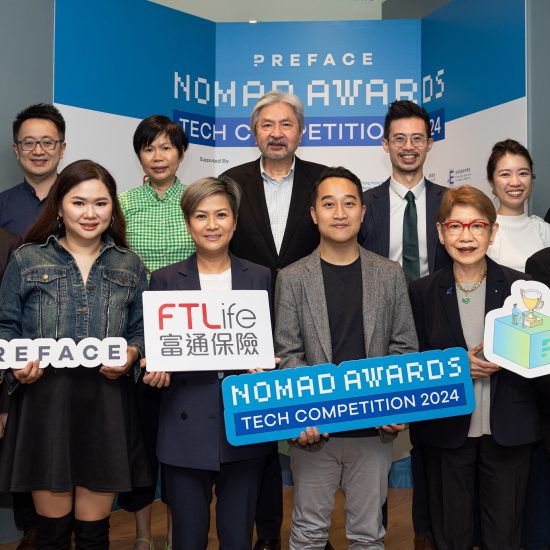This glimpse of the future was crafted by: Kate Yoxall
When Nicolaus Copernicus proved in the 16th century that the earth actually revolved around the sun, he did more than inflict a breathtaking blow to the human ego. He threw a new paradigm into the atmosphere. Soon brows began to furl with questions around the way that society was configured; if the earth itself was not the centre of the universe, then what other so-called divine doctrines of institutional authority rendered review?
Suddenly the same old pills around the supremacy of kings, queens and popes didn’t go down as smoothly; the world began to wake up and see the possibility of something far more inclusive and empowering.
Similarly, within the business world a Copernican revolution is underway. Those at the top are not necessarily the central source to which workers are gravitationally pulled. Quite the contrary, those traditionally on the fringes are moving to the organisation’s centre and new workplace dynamics are interrupting historical rules of engagement.
The future workforce is becoming more a case of ‘skills on tap’, collaborating across corporate lines to cull interdisciplinary knowledge. All of this is dumping traditional management structures into a serious identity crisis, leaving the question to hang in the air, ‘who deserves to lead us from here?’
The emphasis needs to sway from top down management to leadership. If we want our organisational structures to overcome their innovative inertia and breed break-out thinking, we need to focus on collaboration over control, casting direction over cementing hierarchies. Managers as we know them, are dying. Our problem is that many don’t know it yet and those that do are in self-preservation mode and trying to hold down/hold back the next generation.
In doing so, they risk bringing down the organisation that they are trying to manage.
An enemy to innovation
What words tend to go hand in hand with the concept of ‘management?’ Archaic? Stale? Stifling, perhaps? Management conjures up images of pointed fingers over cubicle rows – scores of anonymous employees under the supervised eye of a superior.
The classic picture of a factory line is the appropriate context in which the concept finds its roots. With the rise of the industrial revolution came the demand for streamlined, scalable production of manufactured goods – standardised processes that relied on regulated workflows and quality control systems. Efficiency and consistency were the name of the game, and people were tossable commodities, in the effort to squeeze maximum outputs out of minimal inputs.
But today’s economy is fuelled by knowledge flow, creativity and the ability to think. Ability and aptitude are no longer cut-and-paste credentials that require strict oversight; even those who are not classified as knowledge workers are required to make on-the-spot smart decisions that respond to rapidly changing business climate conditions. Organisational agility is now a company’s bread and butter to survive a digitally disruptive world.
The reality is, in spite of the tremendous need for flexibility, organisations are still suffering from managerial arthritis. Traditional management styles foster hierarchy and division of labour, and knowledge is clustered and contained under the collective banner of ‘social capital’. All of it is incomprehensible to the current language of collaboration and knowledge sharing. With systems still stuck in a 19th century industrial mindset, there’s no room for relationships of trust and cooperation to develop. There’s no opportunity to butt heads, to add perspective, to panic well, and to push through together when bureaucracy keeps you in boxes.
A new leadership ethic
Managers have historically added the best value by ensuring their people stick to the rules. Rules, processes and procedures are needed (particularly in big companies) so as to avoid chaos and to ensure that each person knows their part in the play. This also enables a product (or service) to be repeated and a consistency of quality to be achieved.
Paradoxically, however, these same rules and procedures that underpin quality also limit creativity, innovation and exploration of the new. Large companies are fixated on rules and procedures, and then penalise hard anybody who breaks them. What they should be doing is finding ways to constantly upgrade their rules to so that they constantly build a better product. Their rules and procedures need to be in a semi-rigid state of flux – not too rigid that they can never be changed, but not so lose that there is no consistency.
Managers hate this. They want consistency. They want the rules to be followed. They want order. The new leader is one who can understand the difference between rigid and semi-rigid and the difference between flexible and non-existent. They can understand the notion of continuous improvement and continuous deployment, where those rules and procedures are constantly being upgraded by the people who are intended to follow them (because if they upgrade them themselves, then they are likely to follow them).
The architect-builder
Gary Hamel notes that if we’re going to get serious about tackling our core organisational incompetencies, “we have to start by scrutinising the architecture and ideology of modern management—two topics that aren’t often discussed in boardrooms or business schools.” We have to reimagine a new type of leader that is both architect and ideologist; a reformer in both the tangible and intangible of today’s unique animal known as innovative culture.
Lead with caution, controls and reams of red tape; and watch your ship go down. Celebrate mistakes, take risks and invite collaboration; and expect success. Today’s organisational leaders must be able to envision this social ecosystem and then to build it, one solid and inclusive decision at a time.
The capacity to architect and articulate high performance spaces is one thing. The resourcefulness to implement them is another – instilling systems, rituals and processes, and promoting rich communication and continuous redesign along the way. Traditional management held lines of protocol and status quo, but current leadership demands a more nimble and pioneering business approach that is willing to unlearn for the sake of reinvention.
At the end of the day, a new leadership paradigm is in order. It is one that adds empathy to expertise and trades directives for dialogue. Whether this is a suggested upgrade to the concept of management, or an overhaul of the concept altogether, is a still up for debate. But one thing is clear; radical change is needed. Otherwise, as Peter Drucker reminds us, “If leaders are unable to slough off yesterday, to abandon yesterday, they simply will not be able to create tomorrow.”
(Aurecon’s award-winning blog, Just Imagine provides a glimpse into the future for curious readers, exploring ideas that are probable, possible and for the imagination. This post originally appeared on Aurecon’s Just Imagine blog. Get access to the latest blog posts as soon as they are published by subscribing to the blog.)




